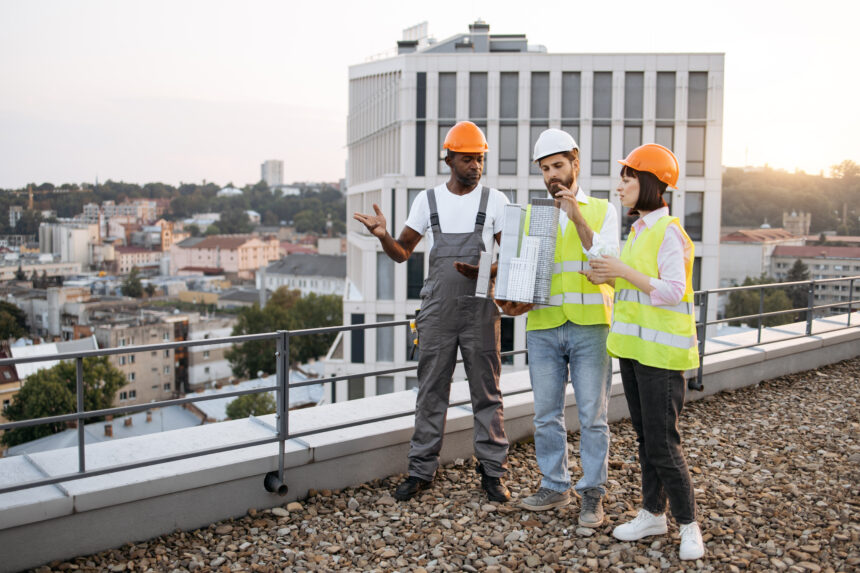Commercial roofs are critical components of any business infrastructure, providing protection against the elements and ensuring the safety of the building’s occupants and contents. However, these roofs are susceptible to various issues that can compromise their integrity and functionality. Identifying and addressing these problems early can save time, money, and potential disruptions to business operations. Here, we explore the most common issues with commercial roofs and provide insights on how to manage them effectively.
1. Leaks and Moisture Infiltration
One of the most prevalent issues with commercial roofs is leaks and moisture infiltration. These problems can arise from various sources, including damaged roofing materials, poor installation, or worn-out seals around penetrations like vents and HVAC units. That’s why it’s important to work with a skilled Bonita Springs Roofing Contractor (or one in your local area) who can detect problems early and make reliable repairs, ensuring your roof remains structurally sound and your building stays protected.
Causes:
- Punctures and Cracks: Foot traffic, fallen debris, or weather-related damage can cause punctures and cracks in the roofing material, leading to leaks.
- Improper Sealing: Inadequate sealing around roof penetrations can allow water to seep in.
- Aging Materials: Over time, roofing materials can degrade and lose their ability to repel water.
Solutions:
- Regularly inspect the roof for signs of damage and promptly repair any identified issues.
- Ensure proper sealing during installation and maintenance activities.
- Consider using moisture barriers and high-quality roofing materials to enhance protection.
2. Ponding Water
Ponding water, or water accumulation that remains on the roof for more than 48 hours, is another common issue. Flat or low-slope roofs are particularly susceptible to this problem. For those dealing with specific challenges like New Jersey flat roof repair, consulting with experienced professionals can provide targeted solutions and ensure the longevity of the roofing system.
Causes:
- Poor Drainage: Inadequate drainage systems can cause water to pool on the roof.
- Structural Issues: Sagging or uneven roof surfaces can create low spots where water collects.
- Clogged Drains: Debris blocking the drainage system can prevent water from flowing off the roof.
Solutions:
- Ensure that the roof is designed and installed with proper drainage slopes.
- Regularly clean and maintain gutters, downspouts, and drains to prevent blockages.
- Address any structural issues that may contribute to ponding water.
3. Membrane Shrinkage
Membrane shrinkage is a condition where the roofing membrane contracts, pulling away from the edges and creating stress on the roof system. This issue is common in older roofs with EPDM (ethylene propylene diene monomer) membranes.
Causes:
- Aging: Over time, exposure to UV rays and temperature fluctuations can cause the membrane to shrink.
- Improper Installation: Incorrect installation techniques can exacerbate shrinkage problems.
Solutions:
- Conduct regular inspections to monitor the condition of the roofing membrane.
- Use appropriate installation techniques and materials that are less prone to shrinkage.
- Consider replacing older membranes with more advanced, shrink-resistant options.
4. Roof Blow-Offs and Uplift
High winds can cause sections of a commercial roof to blow off or uplift, especially if the roof is not adequately secured. Experts specializing in Commercial Roof Replacement Atlanta, or elsewhere, can assess the extent of the damage, recommend the most effective repair or replacement options, and ensure the new roofing system is installed with proper reinforcements to withstand future weather challenges.
Causes:
- Improper Fastening: Inadequate or incorrectly installed fasteners can fail under wind pressure.
- Weak Edges: The edges of the roof are particularly vulnerable to wind uplift if not properly secured.
- Poor Design: Roof designs that do not account for local wind conditions can be more susceptible to blow-offs.
Solutions:
- Ensure that the roof is designed to withstand local wind conditions.
- Use proper fastening techniques and materials to secure the roof.
- Regularly inspect and maintain the roof, paying particular attention to edges and corners.
5. Flashing Failures
Flashing is used to seal and protect the joints and edges of the roof. Flashing failures can lead to leaks and water damage.
Causes:
- Aging and Wear: Over time, flashing materials can deteriorate and lose their effectiveness.
- Improper Installation: Incorrectly installed flashing can allow water to penetrate the roof system.
- Movement: Thermal expansion and contraction can cause flashing to pull away from the roof.
Solutions:
- Inspect flashing regularly for signs of wear and damage.
- Ensure proper installation and use high-quality flashing materials.
- Address any thermal movement issues that may affect the flashing.
6. Thermal Expansion and Contraction
Commercial roofs are subjected to temperature fluctuations that cause materials to expand and contract. Over time, this can lead to various issues, including cracks, splits, and joint failures.
Causes:
- Temperature Changes: Daily and seasonal temperature variations cause roofing materials to expand and contract.
- Incompatible Materials: Using materials with different expansion rates can exacerbate problems.
Solutions:
- Use roofing materials designed to withstand thermal movement.
- Ensure proper installation techniques that allow for expansion and contraction.
- Regularly inspect the roof for signs of damage related to thermal movement.
Conclusion
Maintaining the integrity of a commercial roof is essential for the safety and functionality of any business. Regular inspections, timely repairs, and using high-quality materials can mitigate many common roofing issues. By staying proactive and addressing issues promptly, you can protect your commercial property from the costly and disruptive consequences of roofing problems.


